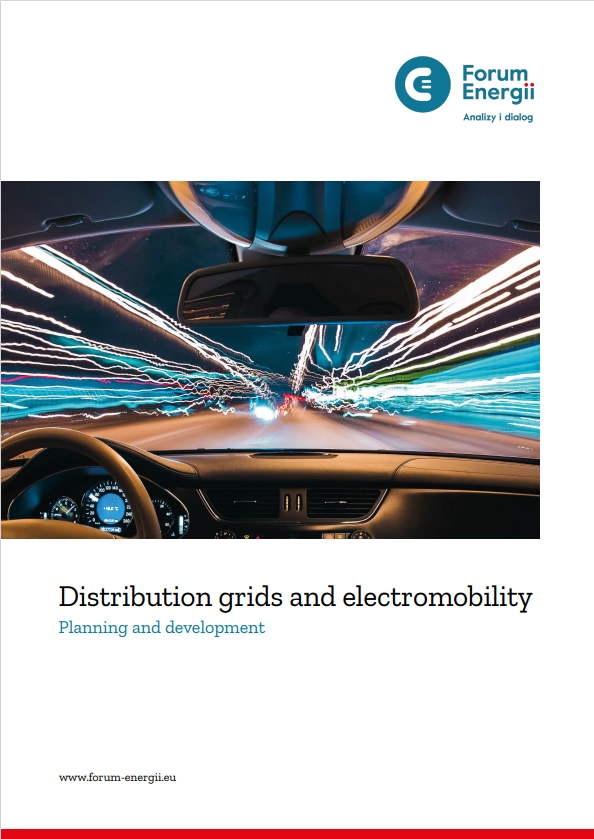In recent days, British Prime Minister Boris Johnson announced an acceleration in the development of electromobility. By 2030, 145,000 charging points are to be built in Britain, and from 2022 all new residential and office buildings will have to be equipped with chargers. This is just one of the announcements of the global revolution in transportation. In Poland the pace and character of changes have different dimension. The National Fund for Environmental Protection and Water Management (NFOŚiGW) has just announced a programme of subsidies for the construction of charging stations for electric and hydrogen vehicles as well as PLN 1 billion support for operators to develop distribution networks.

It is the condition of national and local grids in Poland that is one of the key barriers to rapid electrification of transport. Only their wise modernization and well-planned development will make the grids able to bear the growing interest in electric transport, but also the coming of renewable sources in the energy system.
The process of integrating electromobility into the grid must be carefully timed. This will minimize costs and maximize benefits for the economy and society. In the Forum Energii report “Distribution grids. Planning and Development”, together with analysts from the Instrat Foundation, we have analysed various scenarios for the development of electromobility and the impact of their implementation on national distribution networks.
The most crucial is development of high-power charging infrastructure along expressways and freeways. This is mainly due to the distance of charging stations from the main power supply points. The dynamic development of electromobility will require additional tracks of medium-voltage lines or expansion of transformer stations. At the same time, it is necessary to take care of the grids in large cities – among other things because of the planned electrification of public transport. These changes may require investments to increase the load capacity of medium and low voltage lines. All this means that distribution network operators should urgently prepare network modernization plans, make them publicly available and update them regularly.
Adequate grid development comes at a cost. Our analysis shows that by 2050, the costs will range from PLN 2.5bn in the moderate growth scenario to nearly PLN 12bn in the more ambitious alternative scenario. These amounts are relatively low – they are a fraction of the investment costs already borne by DSOs and required by the growing capacity of renewable energy sources in the system, the need to upgrade and cable the medium- and low-voltage networks, or the implementation of smart meters. In the coming years, Poland will have large financial resources available for investments in universal transport electrification. According to the authors of the report – it is worth investing some of these funds in the modernization of the grid.
The development of electromobility, combined with increased investment in renewable energy sources and decarbonization of the energy mix, is an opportunity to reduce greenhouse gas emissions from transport by even two thirds within three decades. This is an important contribution on the road to climate neutrality – but still not enough to meet the targets set (90% reduction in transport emissions by 2050). This means that apart from electrification itself, additional changes will be necessary, including the development of public transport or cycling.
It is also worth emphasizing that despite concerns about the impact of the growing fleet of electric vehicles on the power system, a greater challenge in the design of low-voltage networks than the development of electromobility is the development of photovoltaic installations. This means that grid investments related to RES development may be sufficient in many areas of the country (especially in rural regions) to accommodate electromobility at the same time. It is important that grid investments are planned effectively, well in advance and take into account megatrends resulting from the changing shape and specifics of the electricity system.
The analysis “Distribution grids. Planning and development” was created within the Polish-German project Int-E-Grid, which is carried out by the Forum Energii together with the Promotion of Electric Vehicles Foundation and Agora Verkehrswende. The project is supported by the European Climate Initiative (EUKI).
Authors:
Paweł Czyżak, Adrianna Wrona – Instrat Foundation
Cooperation:
Michał Borkowski, Joanna Maćkowiak-Pandera, Klaudia Wojciechowska – Forum Energii
Marek Mańko, Bartosz Wieczorek – Price4Wheels
Jacek Mizak – Electric Vehicles Promotion Foundation


